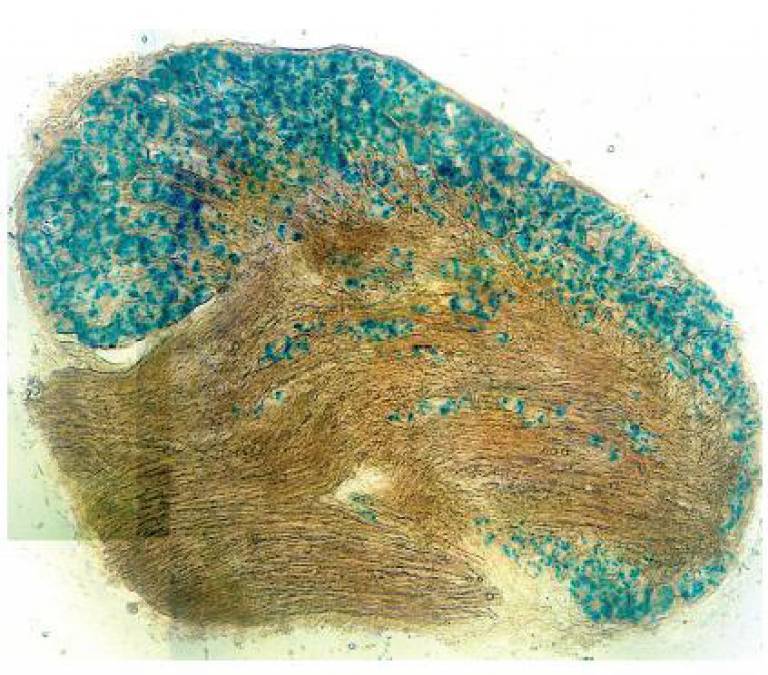New insight into pain mechanisms
24 April 2012
Researchers in the UCL Wolfson Institute for Biomedical Research have made a discovery which could help the development of analgesic drugs able to treat nerve damage-related pain.

The research is published today in the journal Nature Communications and funded by the Biotechnology and Biological Sciences Research Council (BBSRC).
Current pain-killers work
well for some types of pain, but are not very effective for easing the chronic
pain associated with nerve damage. This type of pain is called neuropathic pain
and it is associated with diseases like diabetic neuropathy or trauma.
New findings from Professor John Wood (UCL Wolfson Institute for Biomedical Research) could help change this. They have identified the specific neurons in mice that are important for transmitting particular types of pain and that the transmission of neuropathic pain is dependent on a specific pain-signalling channel called Nav1.7.
Professor Wood and his
team studied mice in which Nav1.7 is lost and were able to demonstrate
that mice without the Nav 1.7 channel did not suffer from neuropathic
pain. This suggests it could be a target for drugs to treat neuropathic pain.
The research also improves our understanding of the role of the Nav1.7 channel in the release of transmitters that cause pain sensations and suggested that new pain killers may work best if they can be directed both to the ends of the nerves in the skin and to the spinal cord.
Chronic pain is debilitating, but not all pain is bad pain. For example, if we touch a scalding saucepan, acute pain makes us withdraw our hand. What we are trying to do is to find targets for drugs which mean chronic pain can be alleviated, while enabling our body to still respond to other types of acute pain that protect us.
Professor John Wood
While it was already known that the loss of this Nav 1.7 channel in humans stops the experience of acute and inflammatory pain, such as that caused by a cut or a burn, or a long term condition like arthritis, this is the first research to show a connection with neuropathic pain. It provides important clues for the development of effective new Nav1.7-targeted pain killers.
Professor John Wood, said: "Chronic pain is debilitating, but not all pain is bad pain. For example, if we touch a scalding saucepan, acute pain makes us withdraw our hand. What we are trying to do is to find targets for drugs which mean chronic pain can be alleviated, while enabling our body to still respond to other types of acute pain that protect us. "
This research highlights the crucial role of fundamental bioscience in providing new knowledge to pave the way for the production of new pharmaceuticals.
Image: Stained dorsal route ganglion neuron Credit: John Wood
 Close
Close

